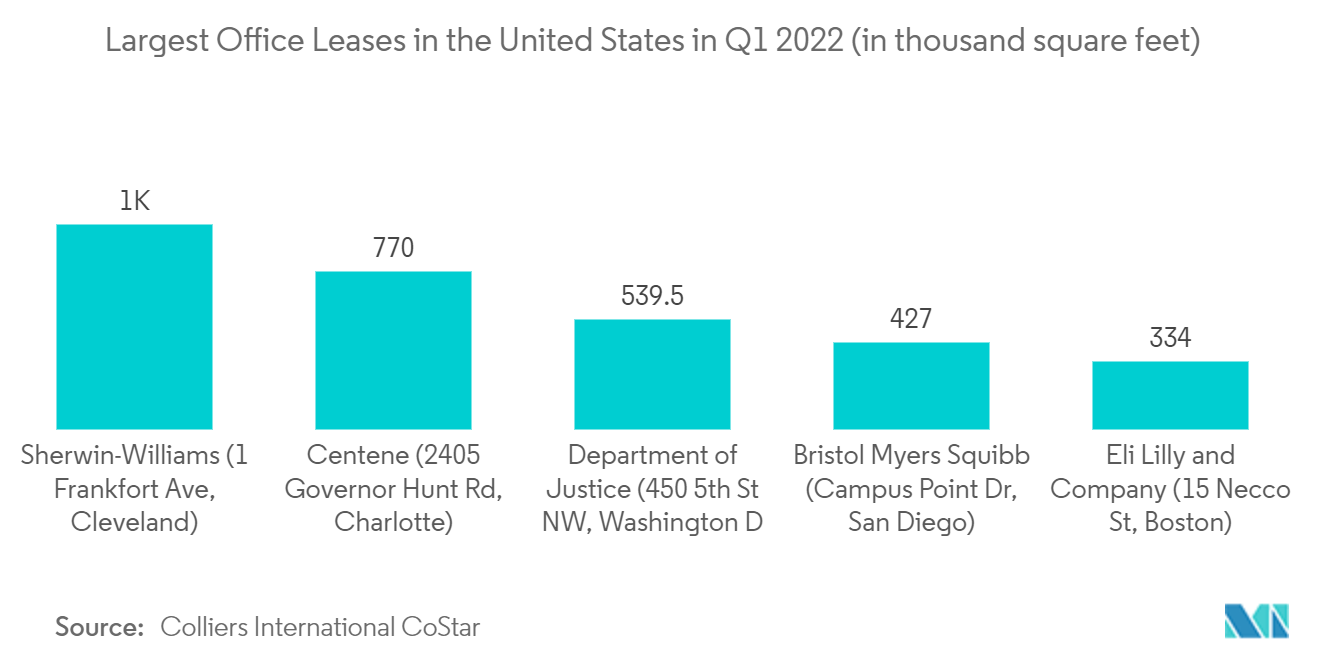Market Trends of US Office Real Estate Industry
Increase in Leasing Volumes
Gross lease volumes increased by 7.8% in Q3 2021, topping 40 million sq. ft. for the first time since the outbreak. As a result, total transactions were up 1.7% from the same period last year. However, they are still 43.8% lower than in 2019. Due to flexible business rules and individual and corporate shifts toward affordability, lower-cost secondary markets in the Sun Belt and the West dominated this quarter, with 18.7% growth in leasing compared to 7.5% growth in gateway geographies.
The unemployment rate dropped to 5.2%, a new post-pandemic low. However, labor participation remains low as workers continue to be concerned about the COVID pandemic. The relationship between job growth and office space requirements may become less connected with emerging hybrid and remote work models.
A recent report from the business world says that the amount of office space rented in Manhattan has gone up by 26%. Office demand in Manhattan was 13.5% higher than the five-year rolling average (8.13 million square feet) and 11.5 percent higher than the 10-year average at 9.23 million square feet, the biggest quarterly volume since year-end 2019. (8.27 million square feet). In contrast, leasing activity increased by 27.6% during the third quarter of 2022 compared to the 7.23 million square feet of activity during the same period in 2021. A total of 24.17 million square feet have been leased so far this year, which is about 50% more than the 16.34 million square feet that have been leased so far in 2021. If the current rate of leasing is maintained for the remainder of the year, 2022's full-year leasing volume would beat 2021's full-year total (24.96 million square feet) by 29.1%.

Office Investment and Rental Rates
For real estate investors, offices are one of the most important asset groups. The US office real estate investment market was valued at USD 24.4 billion in the second quarter of 2021. Rents have steadily grown in recent years, and they are expected to continue to grow in the future. According to the office rental index, as of September 2021, gross rents had grown by almost 24% since the index was established at 100 in 2008. Manhattan, NY, and San Francisco, CA, were the costliest office markets, with yearly sq. ft. rents of USD 128 and USD 95, respectively.
When the need for office space goes up again, newly finished buildings may get even more tenants.People who work in an office will want to know about the latest health and wellness systems and certifications.Since the pandemic, developers have been less eager to start new projects. Amid the crisis, demand was stifled. Basic construction expenses have risen dramatically due to the pandemic. While renters continue to seek out well-equipped Class A office space in prime locations, metro areas with high-quality office products may be better able to weather the storm. Older assets, particularly those that are poorly situated and maintained, are anticipated to be subject to downward pressure from this trend, increasing their risk of distress. The average full-service equivalent listing rate in the top 50 U.S. office markets was $38.04 in January, up 1.1% from the previous year. At the same time, the U.S. office vacancy rate increased further, rising to 16.6% from January 2022, an increase of 80 basis points.
As the pandemic upended the office sector, office vacancy rates have risen in most markets, although certain locations have seen rates rise more quickly than others. The culture of working from home and the recent layoffs in the tech industry have had a big effect on cities that grew quickly because of the tech industry.


